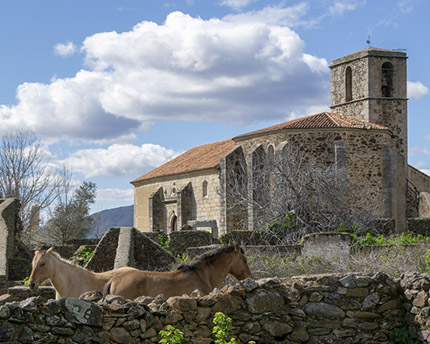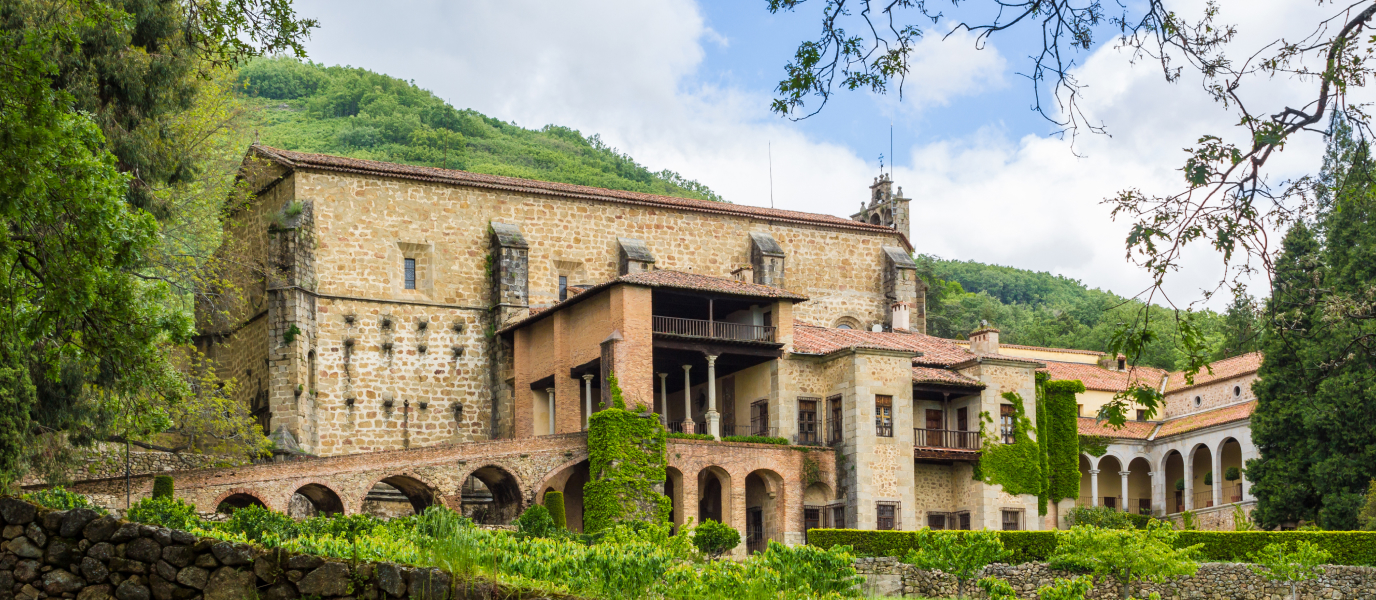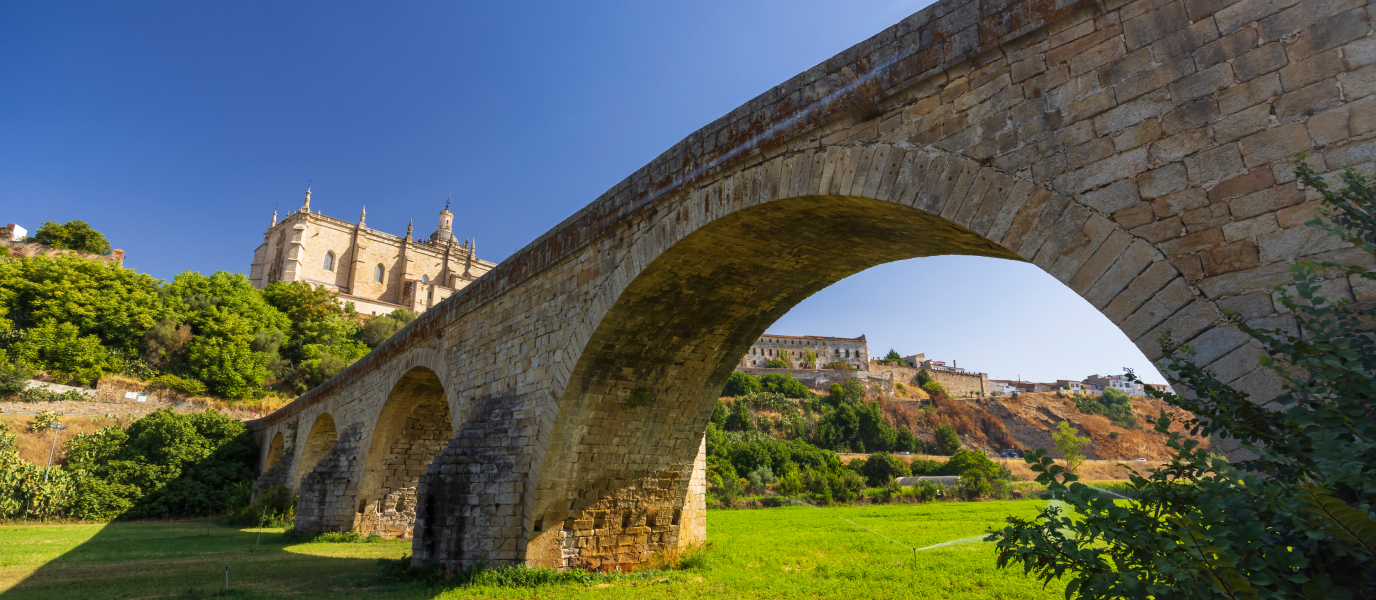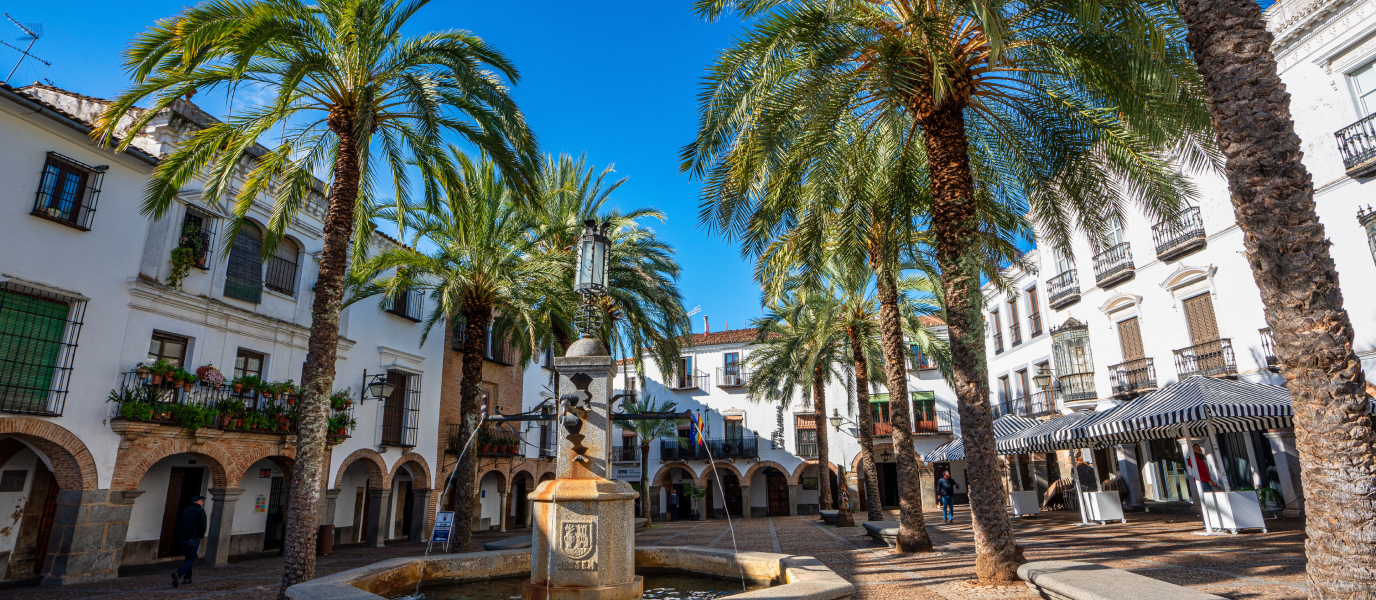Cáceres is known for its unorthodox tourist attractions, like the curious enclave of Las Hurdes and the medieval town of Trujillo, but there is an even more unique attraction located just 100 kilometres from Cáceres: Granadilla.
This beautiful walled town in the north-east of the province has seen the ebb and flow of cultures since the 9th century but today it is completely uninhabited and has been for the past 60 years. It is not without inhabitants because it is an unattractive place, by any means, but simply because the government at the time chose to build a reservoir nearby and forced the inhabitants to move elsewhere. In 1980 what remained of Granadilla was declared a Historical and Artistic Site of Importance and the council set about renovating the town’s monuments, such as its castle, which had fallen into disrepair long before. Thankfully, the splendour of this town has been restored and today you are welcome to walk its quiet streets and marvel at Cáceres’ only ghost town.
What to see in Granadilla, a beautiful abandoned town in Cáceres
Walking the streets of Granadilla is a unique pleasure, especially since it has been restored to its former beauty. The walls that surround the town, the paved streets and the houses painted in lively colours give Granadilla a singular atmosphere that delightfully blends the medieval with the 20th century.
Its position on a peninsula created by the reservoir is an impressive feature in its own right but there are other sites that are worth a visit, too:
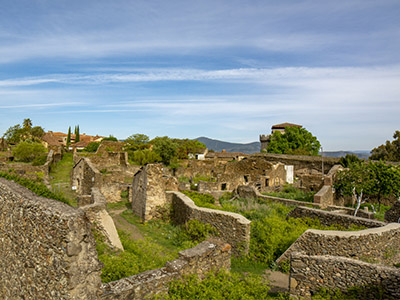
- The Wall. This Moorish Wall, dating from the 9th century, is considered one of the best-preserved of its kind in all of Spain. The fact that it has only one gate makes the town inside feel somehow cosy and the ashlar masonry the wall is made of is some of the finest in the country, making it as much of an attraction as the town it has guarded all of these years.
- The Castle. This is, by far, the most impressive building in the town but it is not your typical castle from medieval times. Built during the 15th century by the first Duke of Alba, this small castle looks more like an elaborated tower that a keep of its own. Nevertheless, it has four semi-circular towers attached to the four sides of the inner courtyard and all of the trimmings of a normal castle – dungeon, water cistern, and rooms with vaulted ceilings. Be sure to climb to the top of the castle in order to get a fantastic view of the surrounding area.
Walking through Granadilla’s eerily quiet streets, you will come across other interesting buildings like the Iglesia de la Asunción, a 15th century church that continues to celebrate certain masses each year despite having no discernible congregation.
The Casa de las Conchas was once the largest building in the town, though today only its façade survives. A fitting metaphor for Granadilla. There is also the Plaza Mayor with its colourful houses that give the impression of a bustling town, full of life, in a place that appears to have literally frozen in time.
Walking is a popular pastime in the environs of Granadilla thanks to the natural beauty that surrounds it. In fact, the director Pedro Almodóvar chose to film the end of his movie Tie Me Up! Tie Me Down! in Granadilla for its beauty. Nearby, you will find Zarza de Granadilla, where you can sample the local cuisine in restaurants like El Cordel or just put on your hiking boots and wander through the pine trees all around.
If you’re a history buff, keep reading …
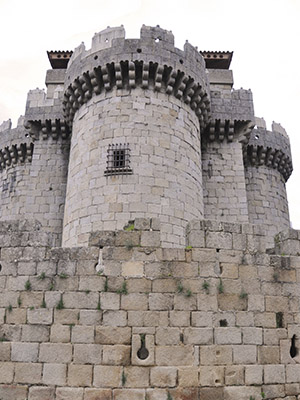
Granadilla was founded by the Moors in the 9th century. Thanks to the elevated position of the time, Granadilla was in the ideal place to keep watch over its surrounding area. It was also found on the famous ‘Silver Way,’ an ancient Roman road that stretched across the western Iberian Peninsula from north to south. After the 9th century, the Moors built a fortified citadel in Granadilla, which they occupied until 1160 when the invading King Ferdinand II of León occupied the city and surrounded it with a wall.
At the time of its founding, it was actually known as Granada but when the Catholic Monarchs conquered the more famous Andalusian city of the same name, its name was changed to the diminutive Granadilla so as not to confuse the two.
During the middle ages, Granadilla became an important power hub in the region, with no fewer than 15 municipalities under its control. This resulted in the plethora of monuments and centuries-old buildings in the town. Over the years, it fell under the control of various kings, dukes and counts until 1955 when the lands were confiscated by the government in order to build the Gabriel and Galán reservoir. This resulted in the surrounding waters rising to such an extent that Granadilla was left isolated with only one way to access it from the land.
Even still, it was not until 1964 that the last residents finally gave in and moved away from Granadilla. Nature reclaimed the town and some of the former residents remember visiting their old houses and having to wear snowshoes in order to walk over the brambles that covered the way. Thankfully, the town was restored again and is now available for visits.



























































